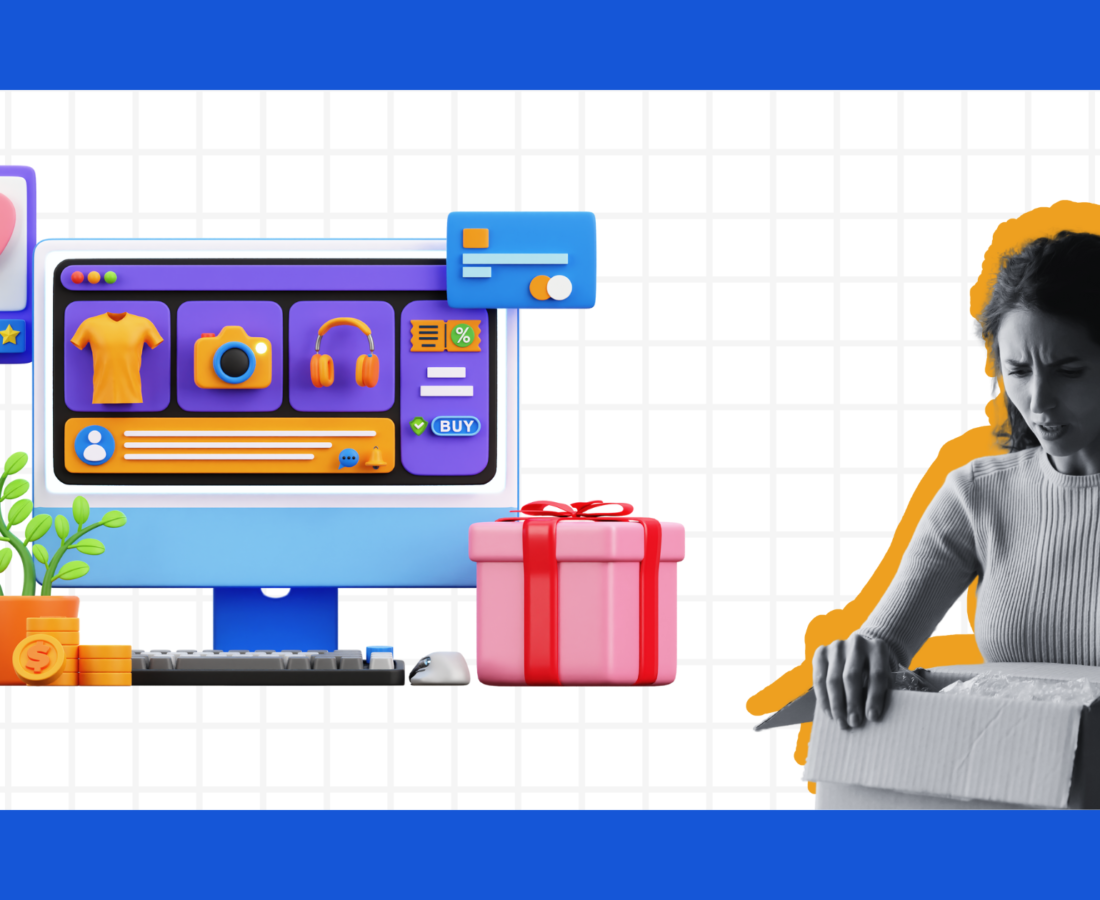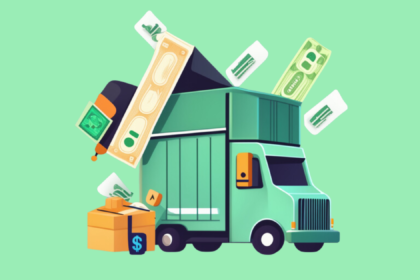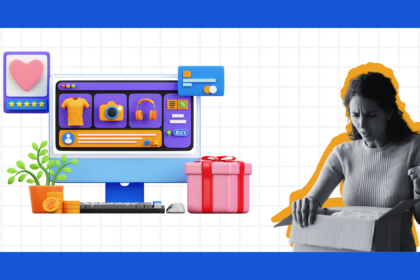The shipping and delivery phase of an e-commerce order is filled with opportunities or ‘touchpoints’ that you can capitalize on to convert one-time shoppers into repeat customers and spread positive word of mouth to influence their close ones, all while hoping that you don’t encounter any challenge that can infuriate your customers and get your costs ridiculously high.
Some of these challenges might be common and inevitable but doesn’t mean you have to step back and watch. Here’s taking a deeper look at them for better understanding and how you can overcome them.
Frequent Shipping and Delivery Challenges and How You Can Overcome Them
High Shipping Costs
Skyrocketing shipping costs are the most frequent challenge for both e-commerce merchants and customers. A not-so-fun fact is that shipping is arguably one of the biggest cost-centers for any e-commerce business.
The problem with shipping costs lies in major shipping carriers transferring the ownership of these costs to the shippers (e-commerce businesses, 3PLs, etc), and these costs are ultimately paid by the end customers, who are prone to be repulsed by high costs and would prefer the brand that offers the least shipping costs than one that offers faster deliveries.
Solution
- Every carrier has their own set of pros and cons. Compare their prices across different locations, etc, and pick a carrier who fits your business’s needs
- Offer ‘free shipping’ as a marketing strategy (based on distance, cart value, no.of items, etc). Don’t worry for bearing the shipping cost, you can balance the scales by spurring shoppers to spend more with your brand
- Use proper packaging techniques to reduce DIM weight costs
- Invest in flat rate shipping to optimize costs if your business frequently ships packages to select locations
- Analyze where your shoppers are frequent and set up a warehouse/delivery hub in that zone to reduce shipping distances as well as improve delivery speed
- Encourage options such as BOPIS (Buy Online Pickup In Store) for shoppers at close distances to prevent shipping in the first place
Shipping costs are not just the primary challenge in the post-purchase front for their frequency in occurrence but almost all other challenges that we’re set to discuss below have a definite impact on shipping costs directly or indirectly. So, not just these solutions but there are multiple ways to cut down shipping and delivery costs and ensure post-purchase profitability.
Late Delivery Incidents
On average, more than 10% of all shipments get delayed, with this number increasing multifold during peak shipping season times like the holidays.
Unfortunately, with high customer expectations and CX playing the role of a competitive differentiator, you cannot afford delays that are common, inevitable, and have the potential to cause bad delivery experiences.
Prevention is better than cure might be cliched but it holds true to this context. Delays may be unavoidable, but their impact on your business can definitely be prevented. Here’s how.
Solution
- Proactively reach out to customers whenever their package is about to be delivered late via customized and empathetic messages. Remember, it is YOU, who should reach out to customers with an ‘order delayed’ notification and not the other way around.
- If the delay looks like it can be fixed, this is your chance to course correct and ensure that the delivery is made on time or when the customer requests. If not, you can check with the customer on how they would like the issue to be resolved (refund, replacement, coupon on their next purchase, etc).
When it comes to reducing your late delivery spend, shipping carriers have a money-back guarantee policy, where shippers can claim refunds when packages are delivered late because of carrier error. However, the process of filing these claims manually is tiresome and time-consuming. To make things easier, you can use a parcel audit solution that automatically audits your invoices and files refund claims on your behalf. P.S. Just ensure that you haven’t signed a money-back guarantee waiver with the carrier.
By following these actions, even if the issue goes unresolved, your customers will still appreciate your efforts to provide them with a great experience and be satisfied enough to shop with you for the next time.
Lost and Damaged Packages
Following delays, comes another inevitable duo that takes up the top spots for the most common delivery issues — lost and damaged packages.
11-15% of all packages get lost or damaged in the U.S. in a year. Of course, this includes packages that get stolen or the ones that get damaged after being left unattended on the porch. But, there is no doubt like delays, packages are bound to get mishandled or misrouted by carrier representatives, leading the orders to get marked as ‘damaged’ or ‘lost’ in transit.
While lost and damaged packages are hurtful on their own, they can incur more damage when these packages have higher emotional value (gifts). Customers who are faced with lost and damaged packages don’t hesitate to share their grievances on social media/ word of mouth and tarnish your brand’s reputation, thereby preventing others from shopping with you.
Solution
- Common action for all delivery incidents – proactively step in and notify the customer about their package getting lost or damaged, and get their requirements on the next course of action.
- Apart from delays, refunds can be claimed for 50+ carrier errors like lost and damaged packages
- Not just the shipping costs, but by insuring your packages (via a shipping carrier or a third-party), you can recover the entire product cost in case of lost and damaged packages
Dealing with porch pirates or miscreants who damage packages is a whole different challenge that requires you to come up with specific measures to keep such issues at bay.
Returns Management Issues
As much as e-commerce merchants don’t like to hear it, the harsh truth is that returns are inevitable. All customers at some point want to return their product and at times, the reason would have nothing to do with you.
More than half of e-commerce returns that merchants face are size and fit-related. However, not the number of returns but the way businesses manage them poses a challenge. For instance, customers returning their product are already in a not-so-positive mood, having to return something that they’ve waited long enough to collect.
So, why make the experience even more frustrating for them? Instead, by making the returns process easy and convenient, you can ensure positive experiences, reduce costs and prevent other ways in which returns are a logistical burden.
Solution
- A returns policy that is clear and easy to understand with longer return windows and lenient return conditions (but not too much to encourage fraudulent returns)
- A returns portal for the customers to easily initiate returns
- Return status notifications and tracking at all times to keep them engaged as well as reduce the burden for your support team
- A returns management solution that allows you to set return rules and resolve returns faster
- Track returns consistently to gain intel into your returns process – why are customers returning their purchases, what items are they frequently returning, how do I cut down unwanted returns/ reduce return-related costs, etc.
Remember, returns only become complicated when they are not controlled as most businesses leave out returns in conversations about shipping and delivery. However, returns are a necessary evil that helps you improve post-purchase CX. So, start optimizing your returns experiences and see the benefits come in for yourself.
Pre-Parcel Jitters
Even when things are going all great and there’s absolutely no issue with your packages during transit, there is still one challenge that you’re set to face in the modern e-commerce era — customers being left in the dark regarding their orders.
On average, 1-in-5 parcels shipped face delivery issues. So, it is understandable that your customers are worried about their parcels facing the same fate, not to forget the high anticipation that comes naturally with each order.
If your customers are unable to determine their parcel status or track their orders, they are prone to bombarding your support reps with WISMO inquiries that can consume all of their time.
WISMO inquiries also take up 50% of customer inquiries.
- Send proactive shipping notifications as the order successfully crosses each delivery cycle (shipped, in transit, out for delivery, etc). Make sure these notifications are sent across channels, wherever your customers are active (SMS, Email, WhatsApp)
- Enable your customers to track their own orders via a widget that is embedded in your emails and website or sent as a link via SMS and chat
- Instead of taking your customers to the carrier’s tracking page that is dull and boring, you can create your own branded tracking page, filled with branded elements and marketing assets to encourage cross-selling and increase revenue in the post-purchase phase
Keeping your customers in the loop of their orders can help you cut down WISMO (Where Is My Order) inquiries by up to 72% and allow your support reps to focus on other important tasks at hand.
Other Frequent Challenges
While we’ve mainly kept our focus on shipping and delivery issues that happen out of your control, how they can pose a challenge to you, and most importantly what you can do to prevent them; there are quite a few challenges that happen within your control and may escape your concern as they are less frequent or trivial. But let’s not take risks — here are some more challenges that your business might face in the post-purchase phase.
- The problem of international shipping – Getting your products across borders involves overcoming a whole bunch of challenges such as exchange rates, customs, duties, etc. In such cases, you can familiarize yourself with the documentation, make use of an international carrier, etc to supercharge your cross-border shipping game!
- Supply chain disruptions – Remember the recent crisis that happened as a result of increased demand from the COVID-induced lockdown and other restrictions? Similar to such instances, there can be cases of pandemics, political unrest, and natural disasters that can prevent smooth shipping. While these disruptions cannot be controlled, you can inform your customers about the ongoing crisis and how it can lead to their parcels arriving late.
- Outsource to a third-party logistics provider (3PL) – If you find shipping expensive and hard, you can hire a 3PL to take care of your last-mile logistics needs. 3PLs can help you with warehouse space, equipment, and personnel. This can help you improve efficiency and scalability and can be especially helpful for small businesses.
Final Word
Time and again, the emphasis on shipping and delivery in an e-commerce environment is stressed enough for two main reasons.
One, ‘the post-purchase’ or the phase of the order after it is shipped out, opens the door for the first set of events that happen outside of anyone’s (particularly the business’) control.
Second, most businesses assume their job is to be done once the order has been handed over to the shipping carrier and move on to the next customer while waiting for this shopper to make their next purchase. What they don’t realize is that a positive post-purchase experience directly leads to an increase in repeat purchases and revenue. On the other hand, it costs 5x more to acquire a new customer than retain an existing one. Thus, the math clearly states that your efforts in the shipping, delivery, and returns phases of the order guarantees your success in the long run.
And this success does not attribute just to positive experiences and customer spending, but also to the reduced operational costs for your business via cutting down unwanted shipping and return shipping related costs.
Thus, no matter how many challenges shipping and delivery might throw at you — handle it in the best way possible to go a step ahead of your competitors.






